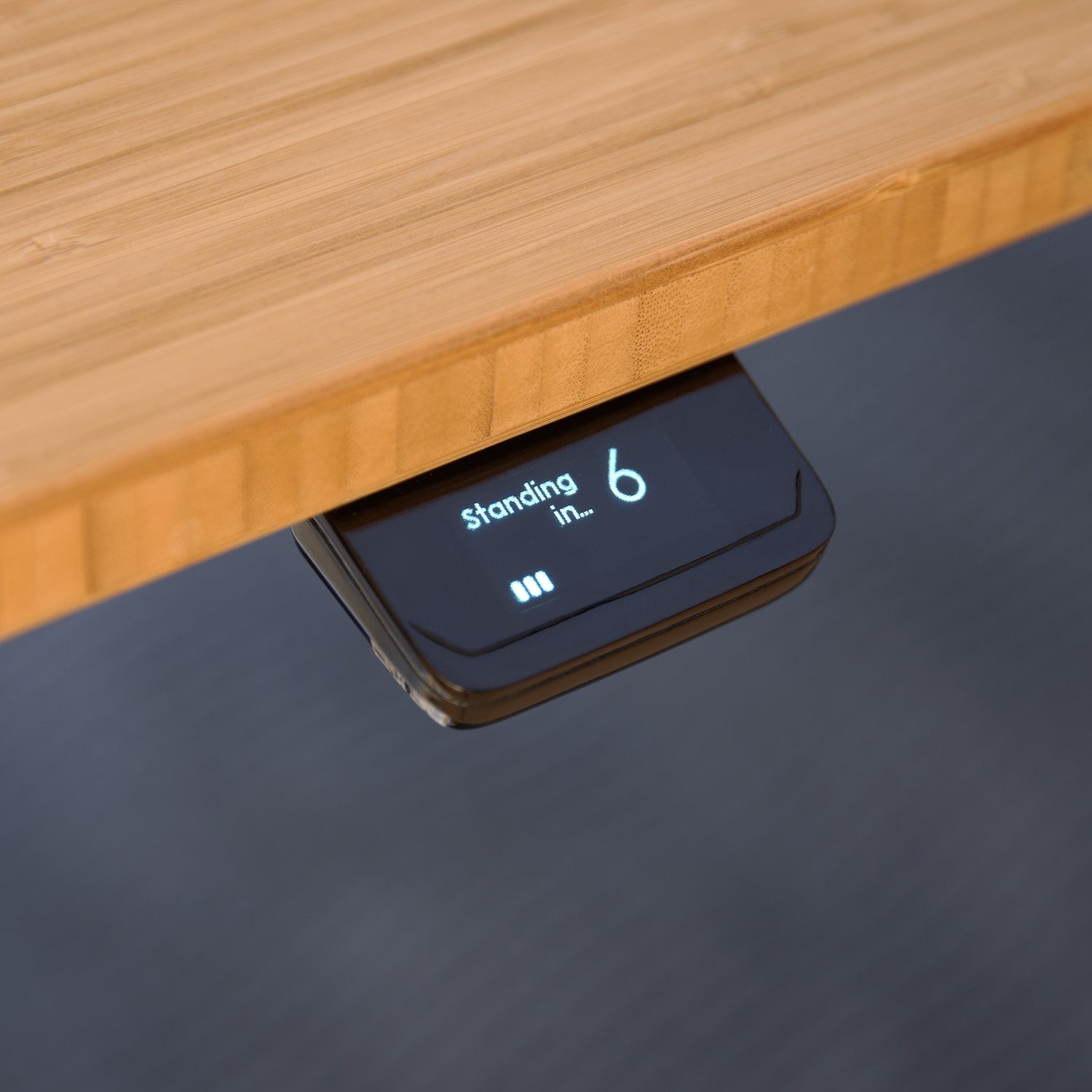When we tell people we work on products related to standing desks, we hear so many people say things like, “My company bought me a standing desk, but I don’t really use it, though I know I should.”
Of course they didn’t use it much (me included)! When focused on work, who has the energy to remember to change position once or twice per hour?
This is a problem we needed to solve.
Timer alarms (even built into some desks now) don’t work because they require action to “opt in” to moving, when we are just trying to focus on work.
Our idea to solve this was to create a desk controller “Tempo” that would have a “Cruise Control” feature to automatically move the desk from sitting to standing and vice versa on a regular schedule.
We cobbled together a quick prototype, connected it to our desks, and immediately found it to be amazingly effective! After a few days using this, we often didn’t even notice the desk moves were happening anymore, so we never had to lose focus on our work. It turns out it is just as easy to ignore these automatic moves as to ignore a timer alarm, but the beauty is if you ignore automatic moves, the desk height changes, improving your health.
We were on to something! Next, we had to go from prototype to product.

Presence Detection
With anything automated, safety comes first. Reliable user presence detection would become our primary safety feature. We evaluated many different technologies for detecting presence. Active infrared (reflecting infrared light off the user) provided us with the most information about the immediate area in front of the desk.
After collecting data from beta testers and many iterations refining the lenses, circuit design, digital filtering, and presence algorithms, we arrived at a design that works well in many different office setups. (And to work in some of the more unusual setups, we included a user-settable sensitivity adjustment.)

Not a Tyrant
We wanted people to remember that Tempo is on their team (rather than a tyrant), so we wanted to give plenty of easy shame-free opt-out options. Here’s what we came up with:
- During a countdown, simply tapping the paddle will dismiss the move and reset the timer.
- If the user is having a grumpy, sick, or sore day (after a workout) we don’t want them to get tired of tapping the paddle and disable Cruise entirely. So, we made it so that after dismissing a move, one button press will “pause” Cruise for the rest of the day, with the hope that the user will feel better tomorrow.
- If the user is concerned about being disturbed during an important Zoom meeting, we again don’t want them to disable Cruise, possibly forgetting to re-enable it, so we made it so a double-tap of the paddle will pause Cruise for a little over an hour (or doing it again will add another hour).

Digital Overwhelm
Creating another “smart” device, we wanted to be conscious of contributing to “digital overwhelm.” On one hand, if there are smart refrigerators, why should desks be so dumb given that we spend hours every day at them and they can have a significant impact on our health?
On the other hand, we didn’t want to make it as smart and complicated as possible just because we could, so we thought carefully about the user experience. As Alan Kay said, “Simple things should be simple, complex things should be possible.”
Following this philosophy, Tempo starts with a simple user interface and progressively adds complexity as users are ready for it. For example:
- Desk height: if all you want to do is change the desk height, pulling up or pushing down on the paddle is as simple as it gets.
- Setting presets: if all you want is basic presets, the first thing you see when you press a button is a screen that guides you to set presets.
- Basic Cruise Control: if you just want your desk to prevent you from sitting or standing so long that it’s impacting your health, intuitive menus on the handset guide you to choose from a few useful options.
- Advanced settings: if you want more advanced settings, you can install the app for more customizations and data visualization.

Premium Experience
Our concept was really just one feature that matters: move the desk automatically for the sake of users’ health. But, if we expect people to upgrade their handset, we should give them a complete premium experience. This meant creating an intuitive interface with clear fonts and animations and testing a bunch of brands of desks to learn what we could from their features and user interfaces. We didn't learn a whole lot from those, but it was good to know we weren't missing something.
User Feedback
Multiple rounds of beta testing have been a major part of our plan to refine the product into exactly what users want. Users have given us valuable impressions, opinions, and ideas. They have also allowed us to collect data from a wide range of office setups. As we begin shipping production units, we will keep an eye on forums, so let us know about your ideas and feedback! Those will be valuable for continuing to improve the product in future firmware updates.






















